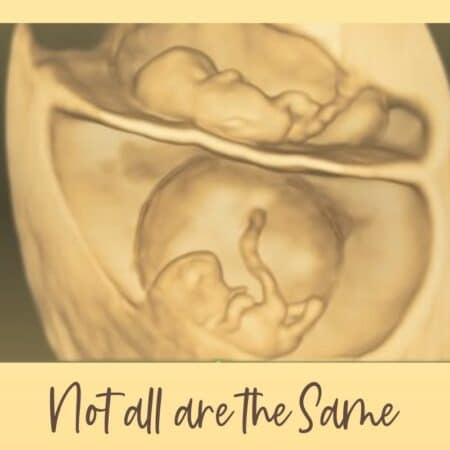
All content on this website, including medical opinions and any other health-related information, is for informational purposes only and should not be considered to be a specific diagnosis or treatment plan for any individual situation. Use of this site and the information contained herein does not create a doctor-patient relationship. Always seek the direct advice of your own doctor in connection with any questions or issues you may have regarding your own health or the health of others.
Ah, the placenta—a squishy, mysterious companion accompanying you during pregnancy. But what on earth is this fascinating organ? Picture a superhero sidekick tucked inside your uterus, supporting your growing twinnies. So, let’s get down to the nitty-gritty of the placenta, shall we?
What’s a Placenta, Anyway?
The placenta is your body’s baby whisperer. It’s the life-support system for your little ones, providing oxygen and nutrients, passing immunity from you to your babies, making hormones, and filtering out the not-so-great stuff. Isn’t that just magical? Your body is not only growing humans but also a whole new organ – or two – to support that life!
The placenta begins to form after the fertilized eggs implant in your uterus (around seven to 10 days after conception). It attaches to the uterus wall in a few possible positions, and the umbilical cord connects the baby to it. It continues to grow throughout your pregnancy to support your babies.

It looks like a flat, round disc of blood vessels and tissue. In fact, I like to think it resembles a tree – a tree of life. It has two sides. The side attached to your uterus is deep red/blue and the side closest to your babies is gray. On average, a single placenta weighs one pound and is about 10 inches long.
Double the Babies, Double the Placentas?
When it comes to multiples, the number of placentas you have can vary. You might have one placenta per baby or a joint placenta for the gang.
The number of placentas hints at whether the twins are identical (from the same egg) or fraternal (from separate eggs). It can get confusing, but the first word in the type of twins you have (i.e., MoDi, DiDi, or MoMo) reveals how many placentas you have. Dichorionic means two placentas, and monochorionic means one placenta. Though new research suggests that 30% of DiDi pregnancies can be identical, most twins with dichorionic placentas are fraternal, while twins with a monochorionic placenta can be identical or fraternal. You then need to access the sac situation – diamniotic, two sacs, or monoamniotic, one sac – to determine whether your twins are identical or fraternal.

Because monochoronic twins share one placenta, they may face certain complications due to unequal sharing of blood, blood volume, or placental nutrients, like twin transfusion syndrome (TTTS), selective intrauterine growth restriction of one twin (sIUGR), twin anemia polycythemia sequence (TAPS), and twin reversed arterial perfusion (TRAP).
The 4 Placenta Positions
There isn’t just one textbook position your placenta(s) will be in. Even singleton pregnancies can have any of the placenta positions listed below. With dichorionic twin pregnancies, you can even have each placenta in a different position!
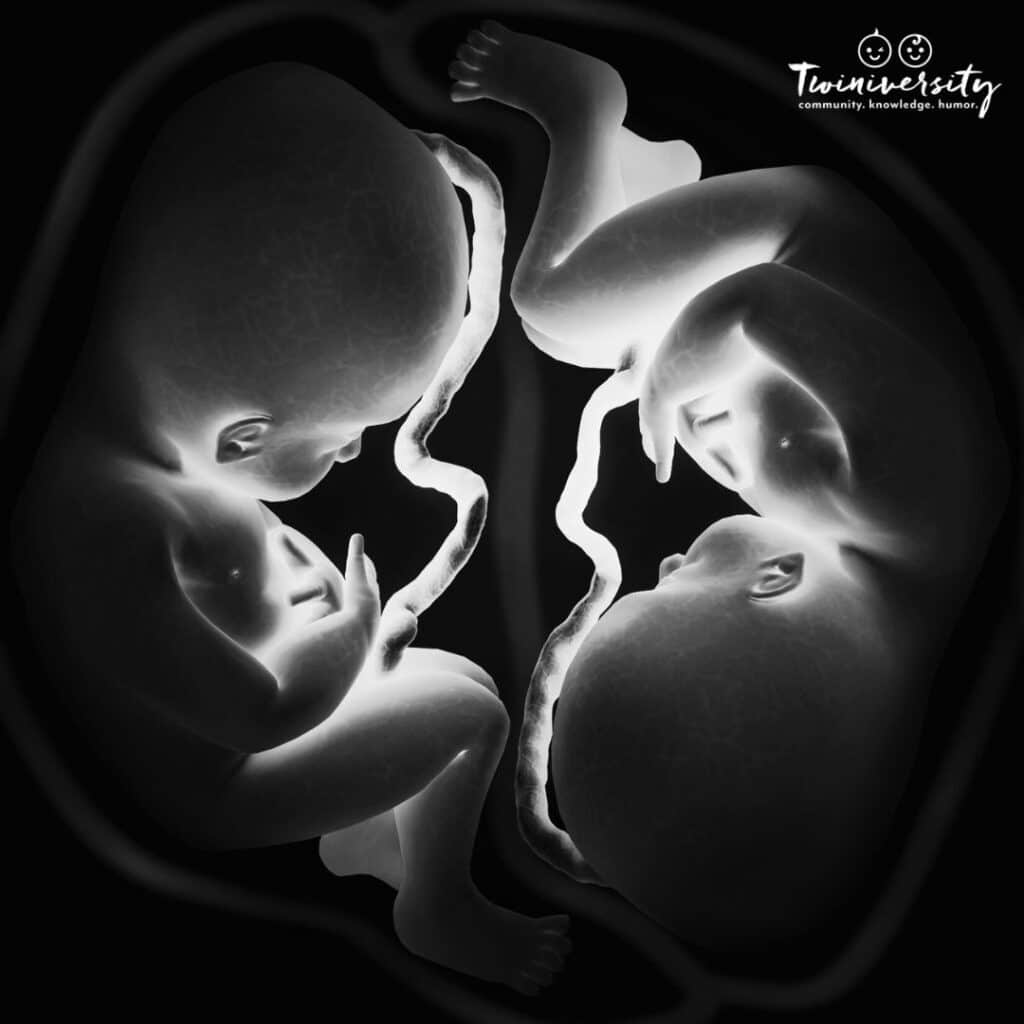
While the positioning can have a large impact on our pregnancies, we, unfortunately, have zero control over where the placenta(s) put down roots.
Position #1: Anterior
Meet the “front-row center” position! An anterior placenta cozies up against your belly’s front wall, often cushioning those adorable kicks and jabs your baby delivers. An anterior placenta does not cause any health problems for you or your baby, but it can also present some challenges. Women with anterior placentas often feel less movement from their babies and/or will feel the first kicks later in the pregnancy than most. It can also be more challenging to find heartbeats on a doppler. And with an anterior placenta, the bump might strut its stuff fashionably late. But with two in there, you don’t need to worry about that!
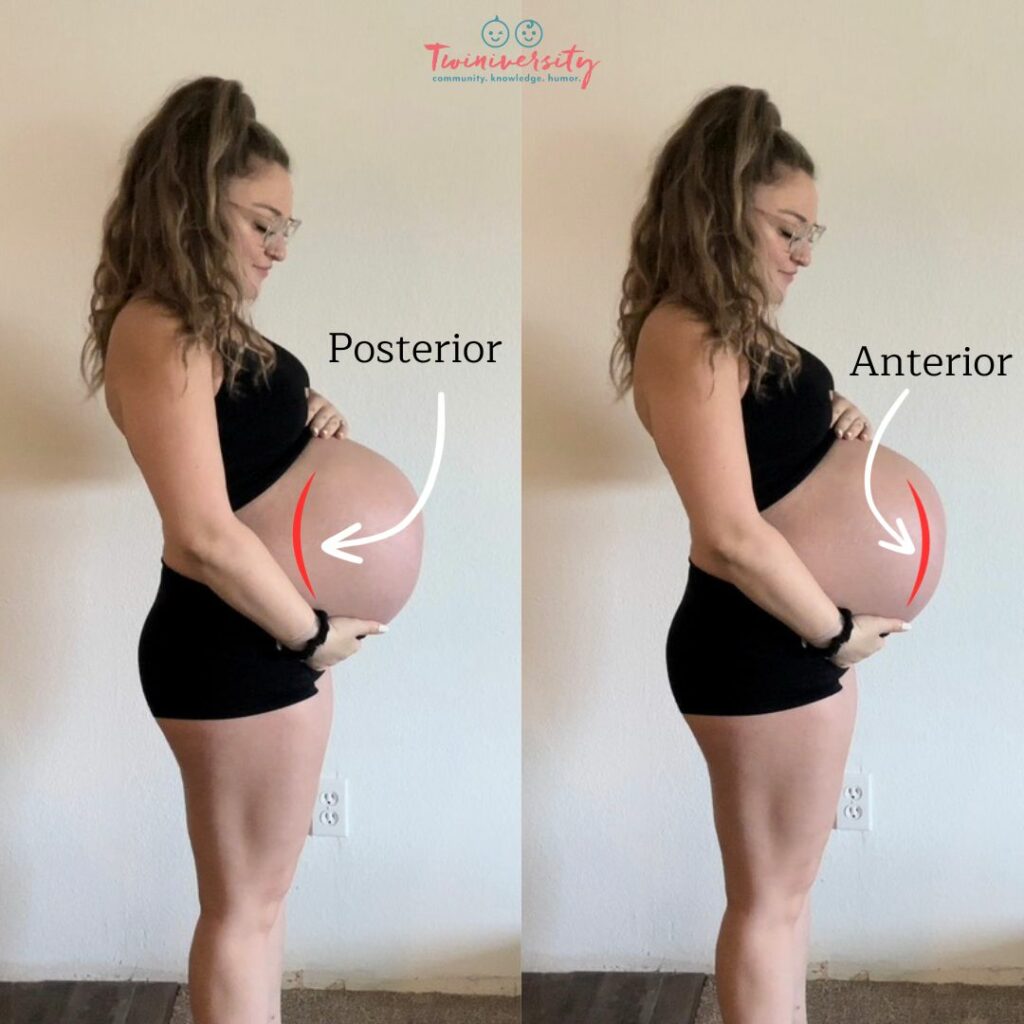
Position #2: Posterior
Now, flip the script. The posterior placenta takes a fancy backseat, hugging your spine. This location sometimes results in a more “in-your-face” feeling of the baby’s acrobatics and gives ultrasound techs a clearer view. This is the most common placenta position.
Position #3: Fundal
Hello, penthouse! The fundal placenta claims the top spot, perched high and mighty near the uterus’s crown, granting baby room to groove. This placenta position is one of the most common and rarely causes concern.
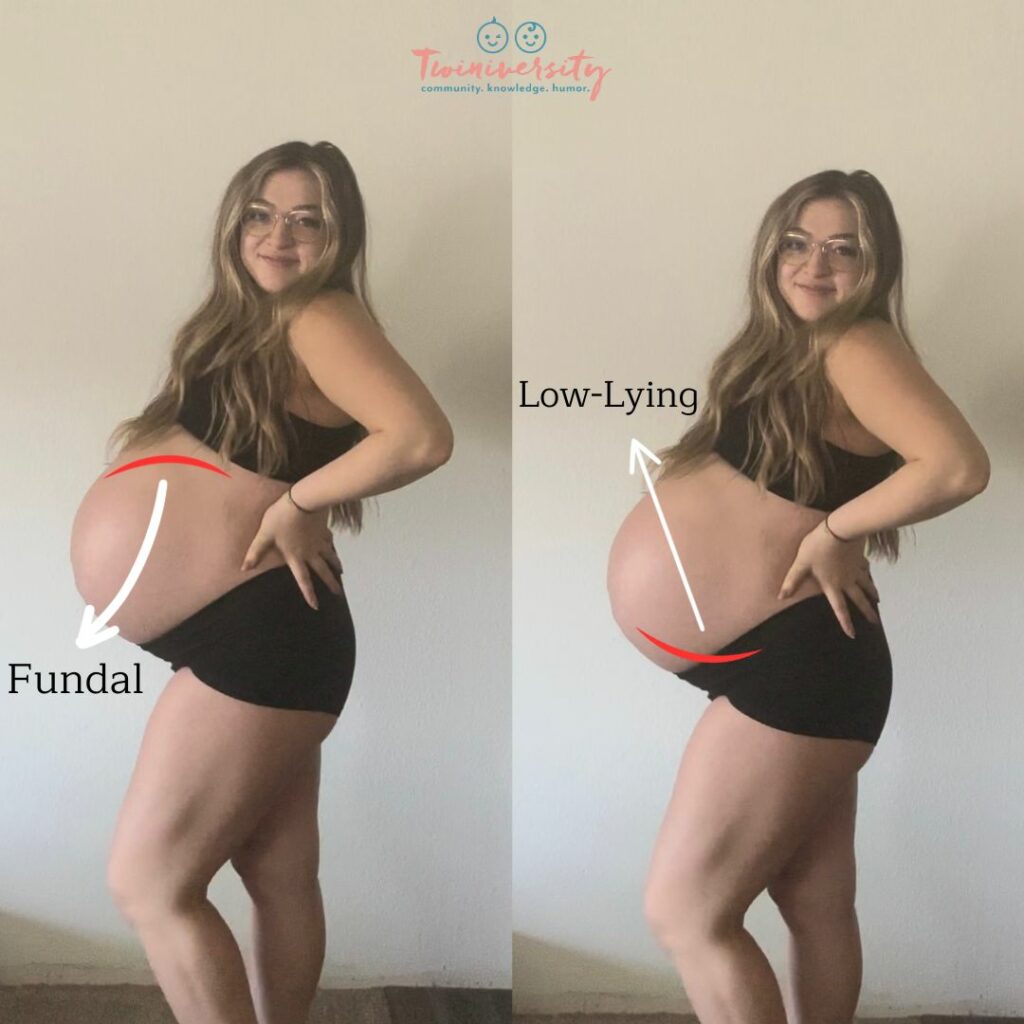
Position #4: Low-Lying or Placenta Previa
In about 1 in 200 pregnant women, the placenta might attach to the lower area of the uterus, preferring to camp out close to the cervix. When this happens, it’s called a low-lying placenta or placenta previa. While deemed “rare,” it’s more common in twin and triplet pregnancies. Unfortunately, researchers aren’t quite sure what causes this positioning. Sometimes, it sets the stage for a rollercoaster ride of cautious monitoring and bed rest prescriptions, though it’s more common early in pregnancy and might resolve as the uterus grows. Otherwise, your doctor will likely recommend a C-section as this magical organ is blocking the exit!
BONUS Position: Lateral
The lateral placenta is fairly uncommon, even in singleton pregnancies, but worth mentioning. A lateral placenta grows on the right or left wall of your uterus. Studies have shown this placement can contribute to a higher risk of our dreaded preeclampsia.
So, What’s Your Placenta(s)’ Position?
Ultrasounds are your backstage pass to peek behind the curtain and know all about its position and behavior. Your ultrasound tech and/or doctor can determine your placenta(s) positioning with a quick scan. This is typically evaluated at your 20-week anatomy scan, though with the increased monitoring and scans that multiple pregnancies bring, you’ll likely find out your positioning sooner.
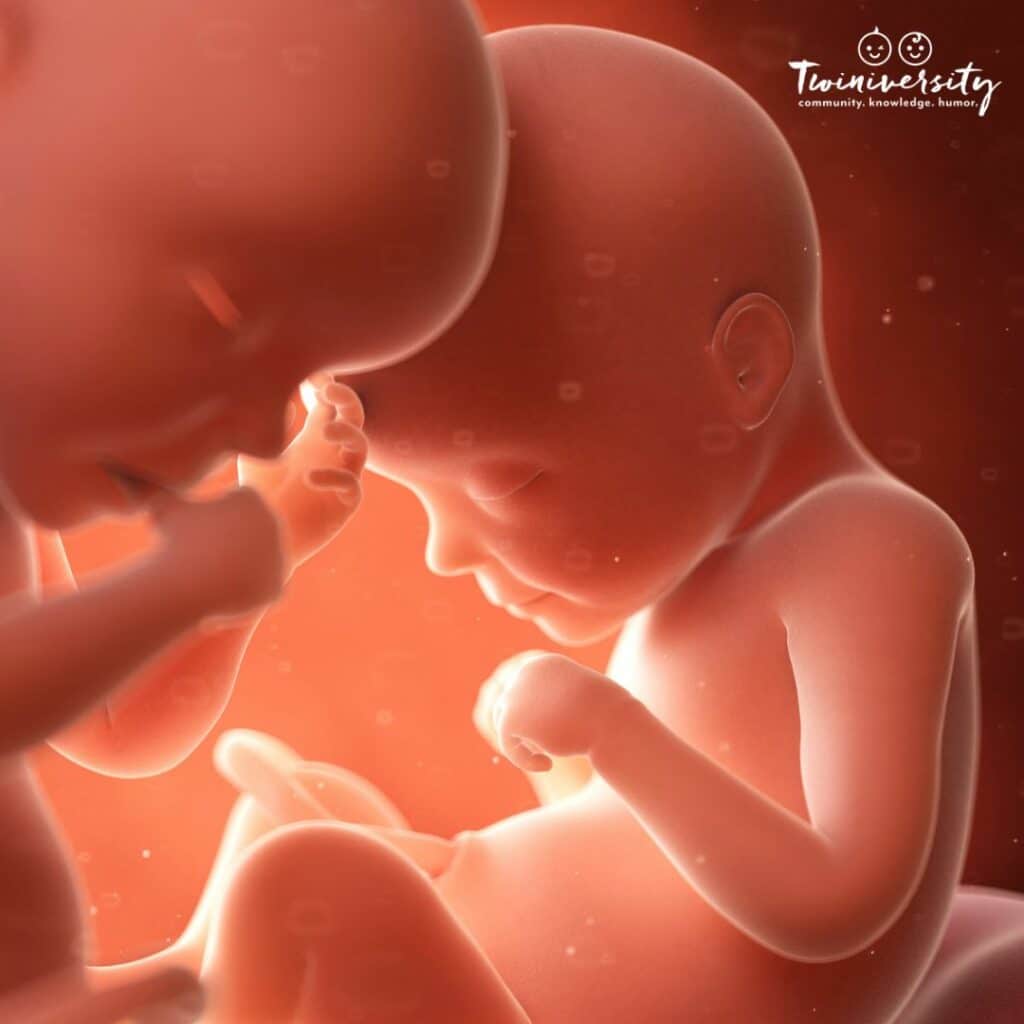
It’s important to note that your placenta(s) positioning can change throughout your pregnancy as your uterus expands. Most placentas end up fundal by 32 weeks.
My Tale of Two Placentas
During my pregnancy with my fraternal twin girls, I had both an anterior and a posterior placenta, aka one on the front of my belly and one against my back. At the time, I had no idea there could be such a thing as different placements! The only effect this had on me was I felt my baby A move less frequently (the placenta had lower positioning but wasn’t quite “low-lying”), and I didn’t start to feel my babies super often until about 26 weeks… which was a huge bummer until the somersaults kicked in and I couldn’t breathe! And I never got to see a foot sticking out like so many moms warned me about.
My doctor also kept an eye on my anterior placenta so that it didn’t fall too low (aka placenta previa) and complicate my c-section. Thankfully, it caused no complications at all, and I delivered my beautiful twinnies at 37 weeks and 6 days via a nearly perfect, scheduled c-section.
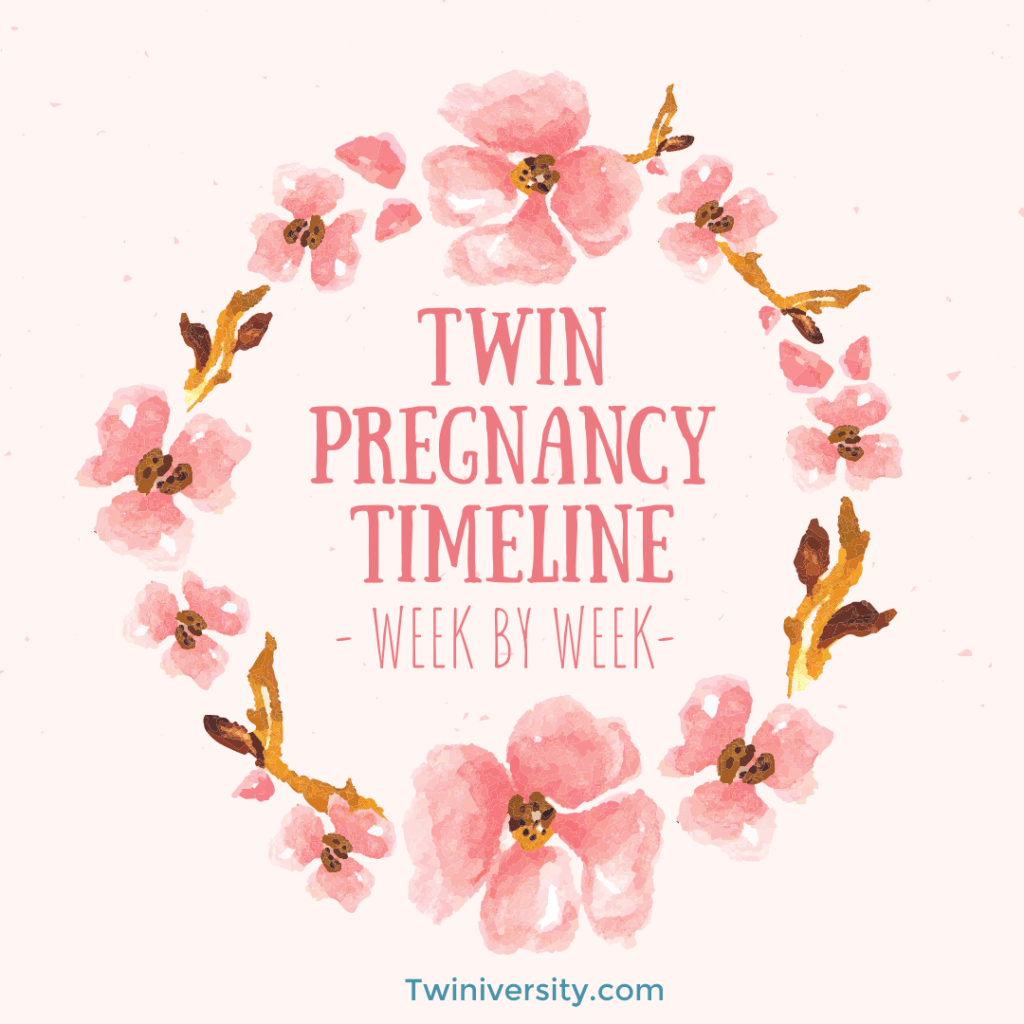
If you just heard that second heartbeat for the first time, or you know it’s been two for a while, you need to read our twin pregnancy week by week timeline to help you learn what happens week by week with twins. Click here to learn more… and while you’re at it, check out our expecting twins classes and twin parent coaching services.
Do you have Twin Pregnancy Concerns? Read this now!
Predicting Gender? Not So Fast!
You may have heard an old wives tale that the placenta’s location can reveal a baby’s gender. Unfortunately, science hasn’t proven this, and the placenta’s location isn’t the crystal ball for your baby’s gender. So, keep those gender reveal parties on standby!
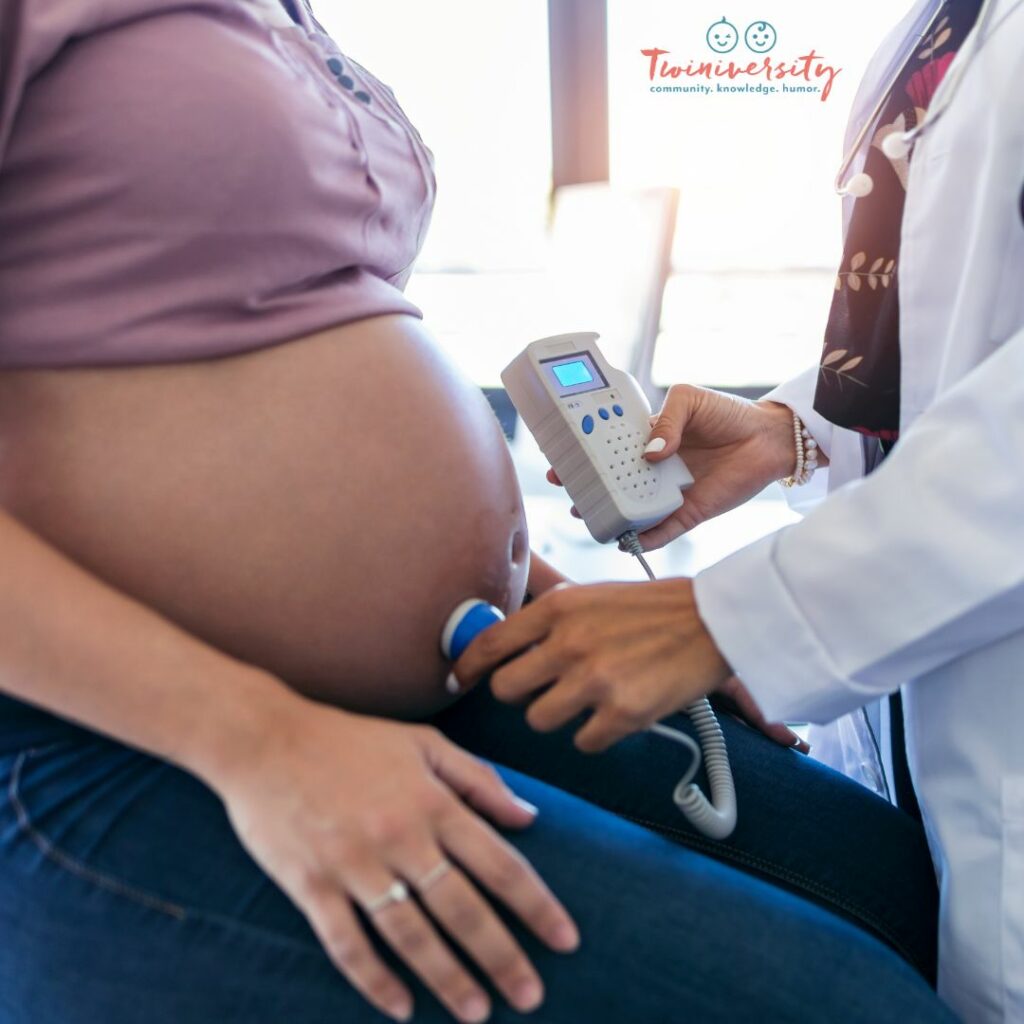
How is the placenta delivered?
If you deliver your twinnies vaginally, the placenta will follow vaginally as well. Some call this the third stage of labor. Your health care team might also massage your stomach (the first of many times… sorry to break it to you) to encourage your uterus to contract and release your placenta(s). You might even be asked to deliver the placenta.
If you have a c-section, your health care provider will remove the placenta from your uterus during the procedure – easy peasy.
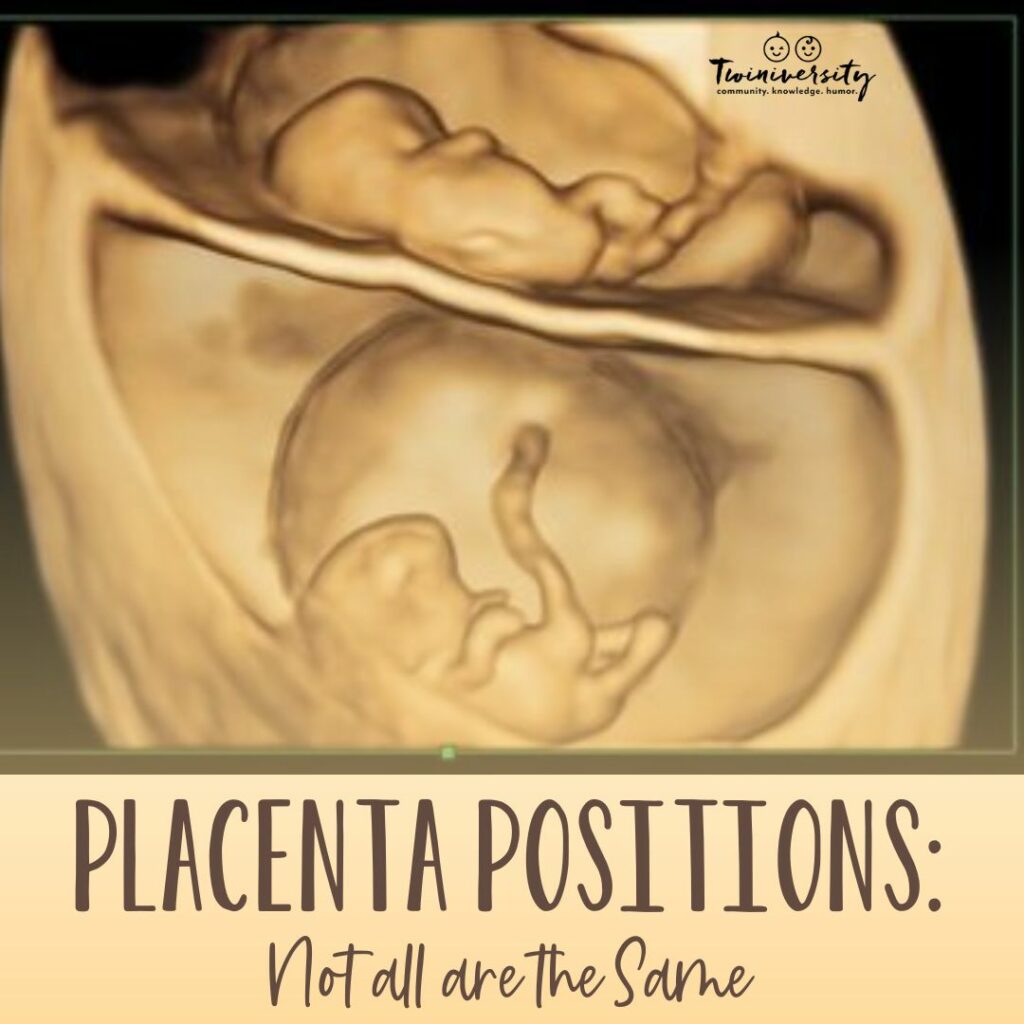
Your doctor will examine the placenta(s) to make sure it’s intact and evaluate its health. They’ll want to make sure it’s all out to avoid a condition referred to as retained placenta. If you get the chance, be sure to peek at your placenta(s) on delivery day. They are truly a marvel and so fascinating.
And there you have it! The placenta is a pregnancy pal with its own star positions and tales to tell. While its positions might pique curiosity and prompt theories, this unsung hero continues its silent work, keeping your twinnies snug and cozy until showtime!
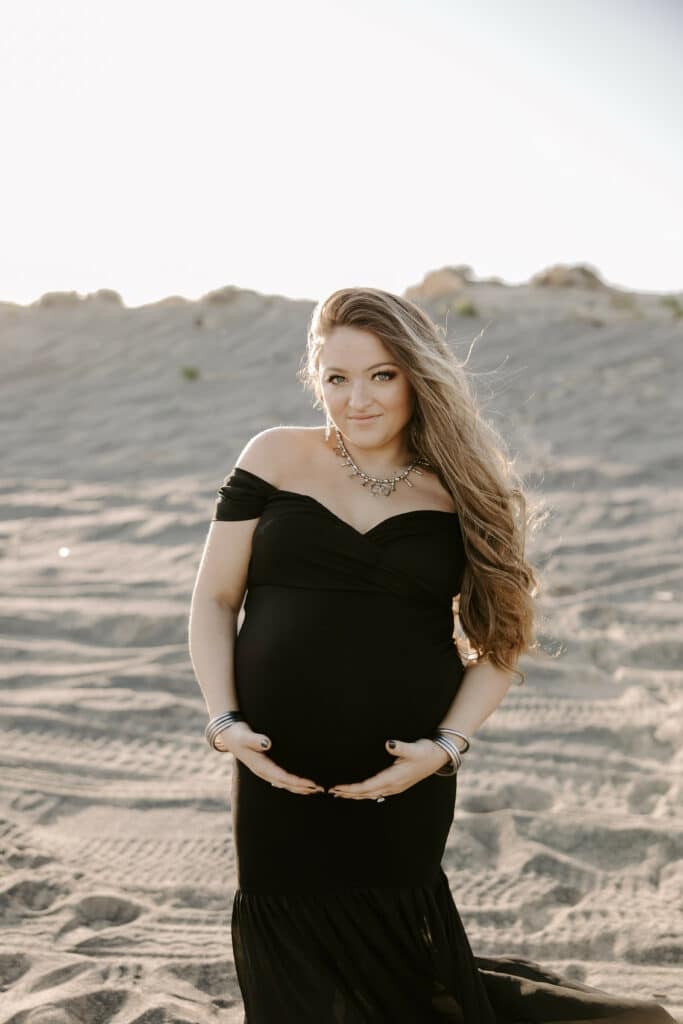
Kylee Burleigh lives in Washington State and effortlessly juggles multiple roles while embracing the chaos of a vibrant family life. With a Bachelor’s degree in communications, she’s a wizard at weaving compelling stories. When she’s not busy wrangling words, Kylee is a dedicated wife with fraternal twin girls, adding a delightful twist to her already bustling life. She tackles a full-time communications job, provides stellar marketing services to clients, and is a contributing writer to Twiniversity. In her rare moments of respite, Kylee embraces holistic living and immerses herself in thrilling outdoor escapades like hiking, hunting and tearing through the wilderness in her trusty side-by-side.









